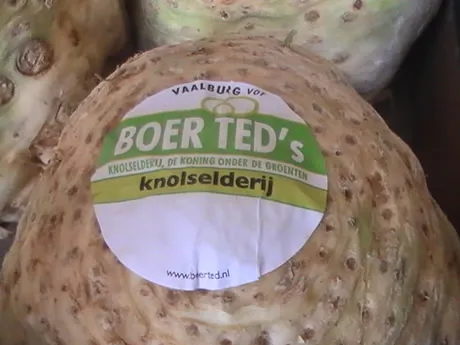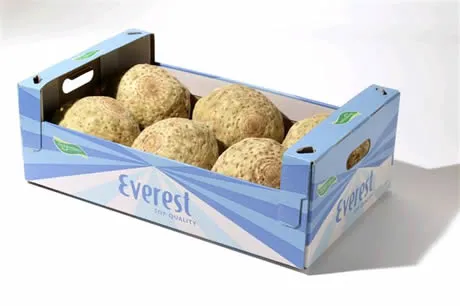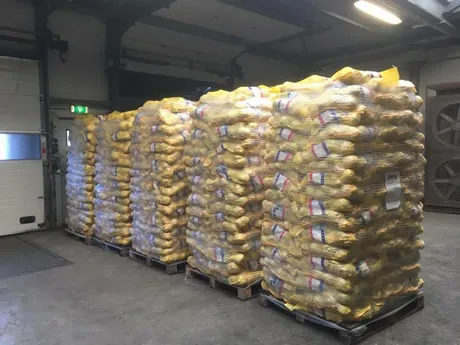It’s almost impossible to think of a bigger difference than the one between the current and last celeriac season. “We’re having a very tense season, because the difficult 2017/18 season seamlessly changed into a season of scarcity,” says manager Gerard Breed of JH Wagenaar from Hoogkarpsel, the Netherlands, a subsidiary of The Greenery that markets all celeriac of grower Vaalburg, or ‘Boer Ted’ from Zuid-Schermer.

“We’ve marketed celeriac from the old season for a remarkably long time, well into September 2018. It then soon became clear the warm and dry summer in Europe would affect the market. When the prognoses that Germany and Poland would have yields 30 per cent lower than average were announced, there was a certain mood on the market,” Gerard continues. “A lot of speculation occurred around September, but I expect there weren’t many winners among those speculators in the end.The trade sold speculatively remained very small, resulting in lower yields per hectare. Prices might’ve been at a high level, but it didn’t match the high cost price of the speculators.”

“The celeriac had considerable delays in growth in the south of the Netherlands in particularly, but we were also affected by this. Many didn’t achieve even one kilo, they remained at weights around 600 grammes. Although that isn’t exactly the goal of the Dutch production, these smaller tubers sell quite well on the Eastern European market. Because of this, these countries arrived on the market fairly early, and when prices rose quickly, interest immediately dropped,” Gerard remembers. “Furthermore, some batches that would’ve been meant for industry were now sold on the fresh market. Because of that, prices of the fresh market and industry were practically the same at one point, which is unique, historically.”

Looking ahead to the coming months, Gerard expects a fairly normal season. “I think there’s still a fair amount on the market. The major question is how quality will be as a result of last summer’s warm weather, because storability is reduced because of this. This is why I expect we’ll reach the end of the season less easily, and I wouldn’t be surprised by a further price rise either. Quality will decide at which speed that will happen, but I don’t think the market will fall soon. All in all, it’s a great year, particularly for growers with high yields, but a good year like this doesn’t just have winners,” Gerard concludes.

For more information:
Gerard Breed
J.H. Wagenaar
Tolweg 7
1616 AT Hoogkarspel, the Netherlands
Tel: +31 228 56 64 17
G.Breed@jhwagenaar.nl
www.jhwagenaar.nl
